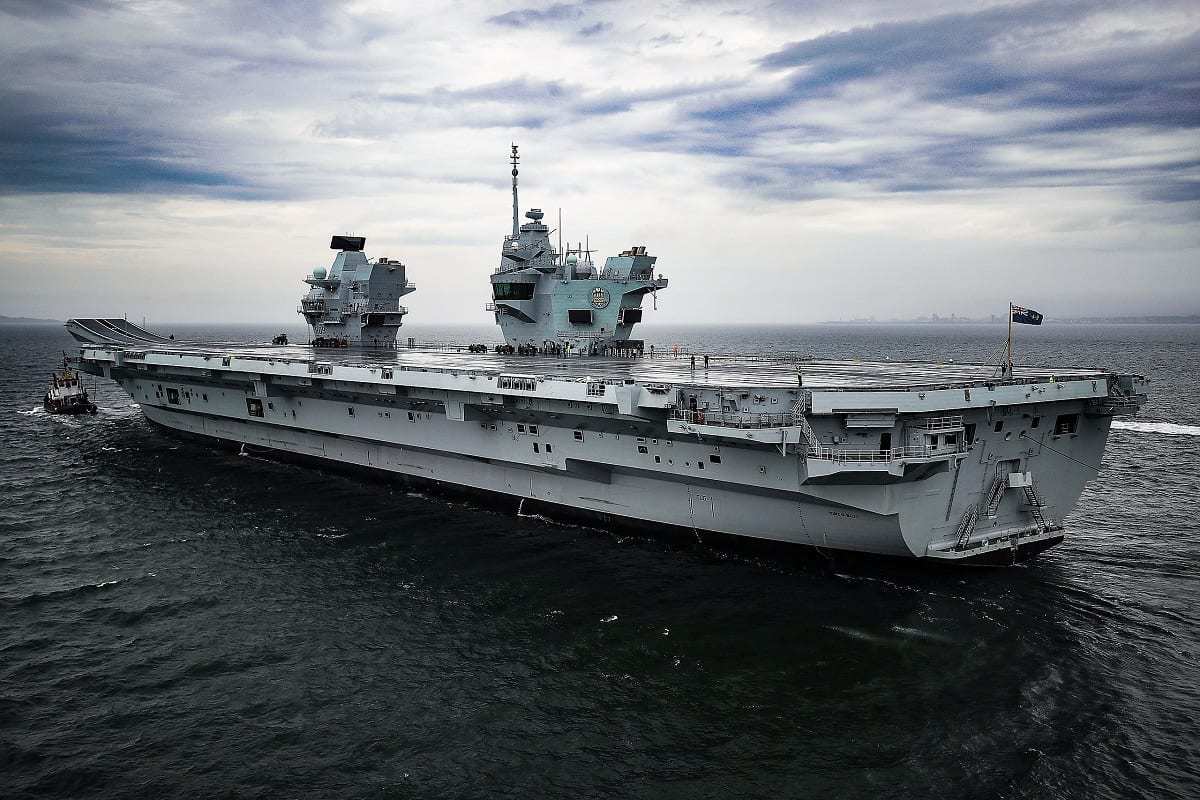Much levity has been aimed at Russia’s flagship aircraft carrier Admiral Flota Sovetskogo Soyuza Kuznetsov, which remains in drydock undergoing repairs. Yet, she is far from the only carrier to suffer serious problems (and to receive mockery), and some in the UK may be tired of making excuses for HMS Prince of Wales, the Royal Navy’s newest carrier – and NATO flagship.
The £3.2 billion aircraft carrier, the most expensive warship ever built in the UK, was declared “fully operational” just a year ago. However, she was forced to limp back to port in late August, breaking down off the Isle of Wight in the English Channel after sailing from Portsmouth Naval Base. The carrier had been scheduled to take participate in flight trials before a diplomatic visit to the United States.
An inspection conducted by divers and engineers found that the 33-ton starboard propeller had malfunctioned, while a coupling holding it in place had broken. The 65,000-tonne flattop was towed back to Portsmouth for further examination by engineers from Babcock, the ship’s builder, before the decision was made for the carrier to travel to Rosyth, where she was built, to undergo the repairs in dry dock.
However, earlier this week, that departure back to Scotland has been delayed as engineers have been unable to remove the damaged propeller! Work continued throughout last weekend, while bad weather also impacted the planned travel that requires a tug.
“Royal Navy divers have inspected the starboard shaft of the ship and the adjacent areas and they have confirmed there is significant damage to the shaft on the propeller and some superficial damage to the rudder but no damage to the rest of the ship,” explained Rear Admiral Steve Moorhouse, director of Force Generation, who is responsible for making sure Royal Navy ships are ready to deploy.
“Our initial assessment has shown that the coupling that joins the final two sections of the shaft has failed,” Moorhouse added.
Deployment Scuttled
HMS Prince of Wales is currently absent from her role as NATO flagship, while the trip to the United States was scuttled. HMS Queen Elizabeth was sent in instead – and she had arrived in New York City last week in advance of the Atlantic Future Forum, a defense conference aimed at strengthening UK and U.S. military ties.
“The full extent of the repairs will be known once the ship has entered dry dock,” the Royal Navy announced via a statement. “We are committed to getting HMS Prince of Wales back on operations, protecting the nation and our allies, as soon as possible.”
This was just the latest trouble for the Royal Navy’s carrier.
In 2020, the HMS Prince of Wales suffered an engine room flood following a fire system malfunction, which by coincidence had also delayed a planned Atlantic crossing.
The problems with the warship also coincided with the news that a former commander has been sacked following comments he allegedly made to female colleagues. A months-long investigation into Captain Steve Higham, who had also been a former aide to Prime Minister Boris Johnson, unveiled a string of complaints against the naval officer. Capt Higham was not handed a court martial as he had not been accused of breaking the law and instead was given an ‘administrative dismissal’ by Navy top brass earlier this week.
A Senior Editor for 1945, Peter Suciu is a Michigan-based writer who has contributed to more than four dozen magazines, newspapers, and websites with over 3,000 published pieces over a twenty-year career in journalism. He regularly writes about military hardware, firearms history, cybersecurity, and international affairs. Peter is also a Contributing Writer for Forbes. You can follow him on Twitter: @PeterSuciu.

